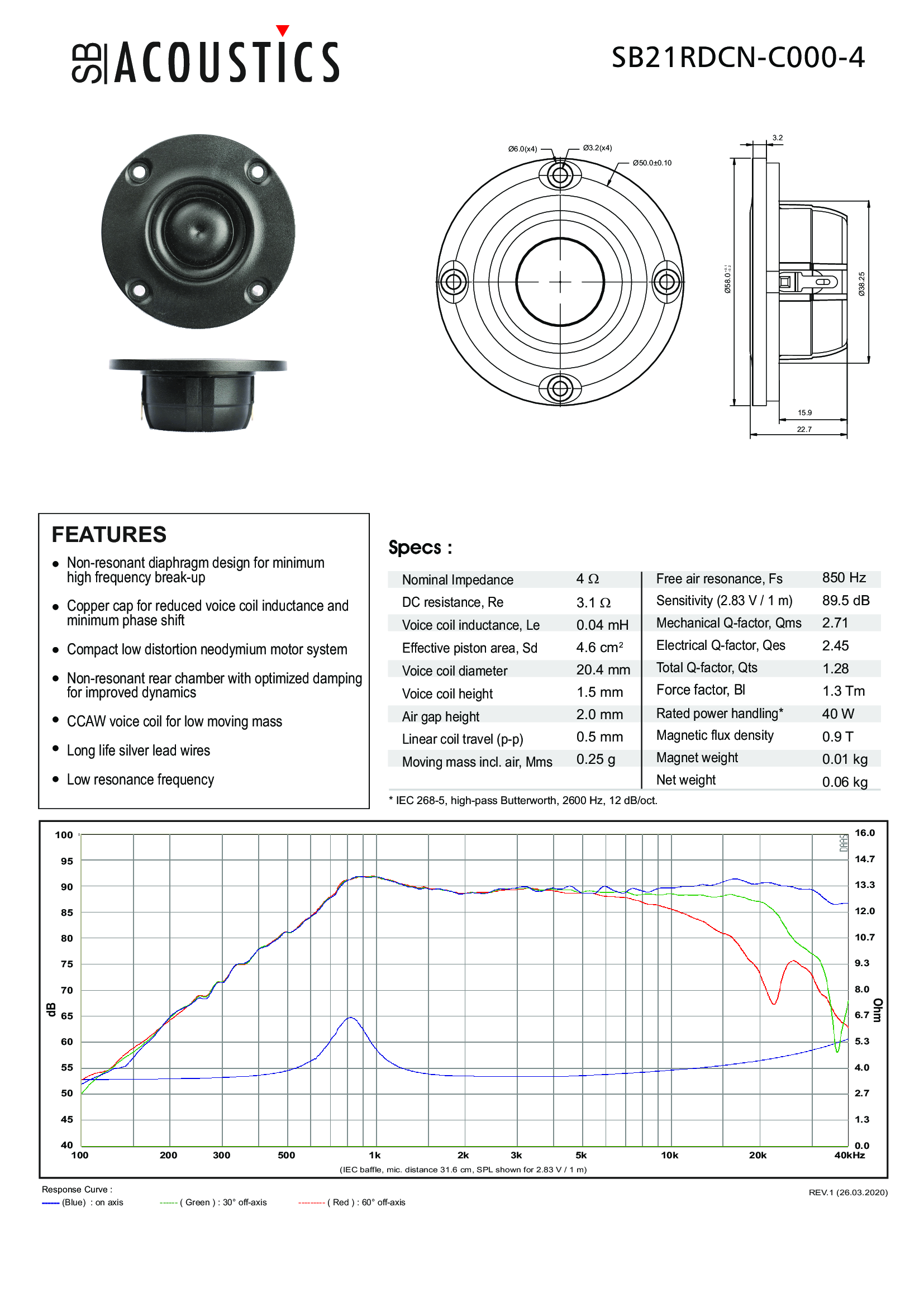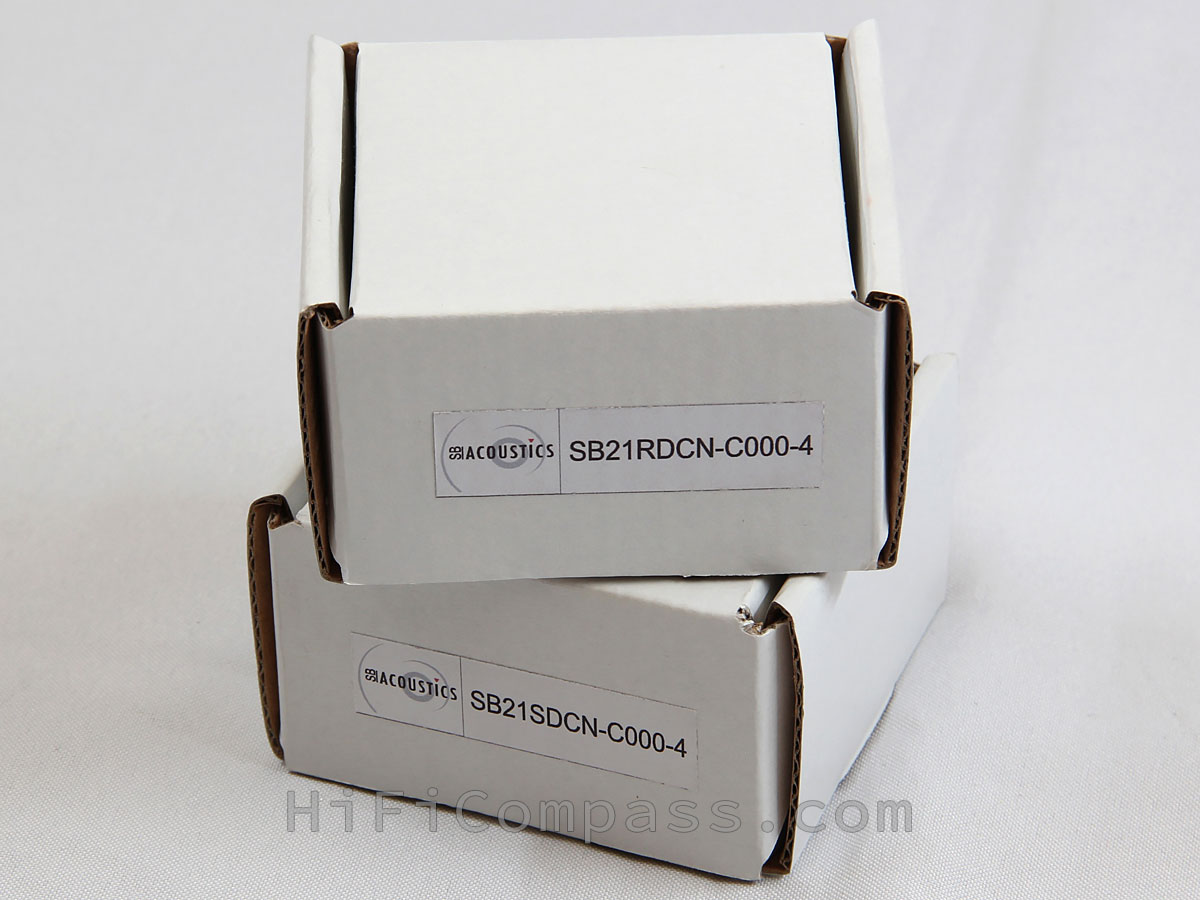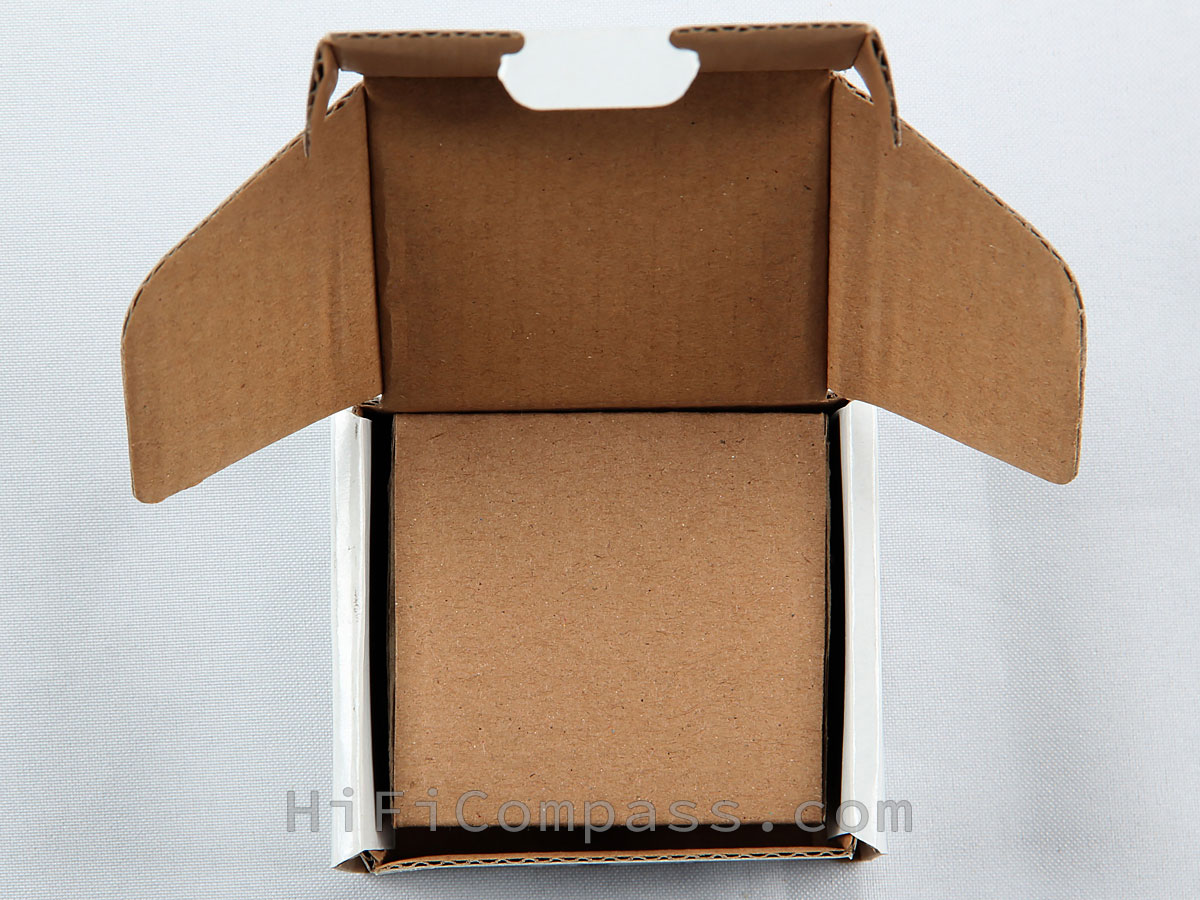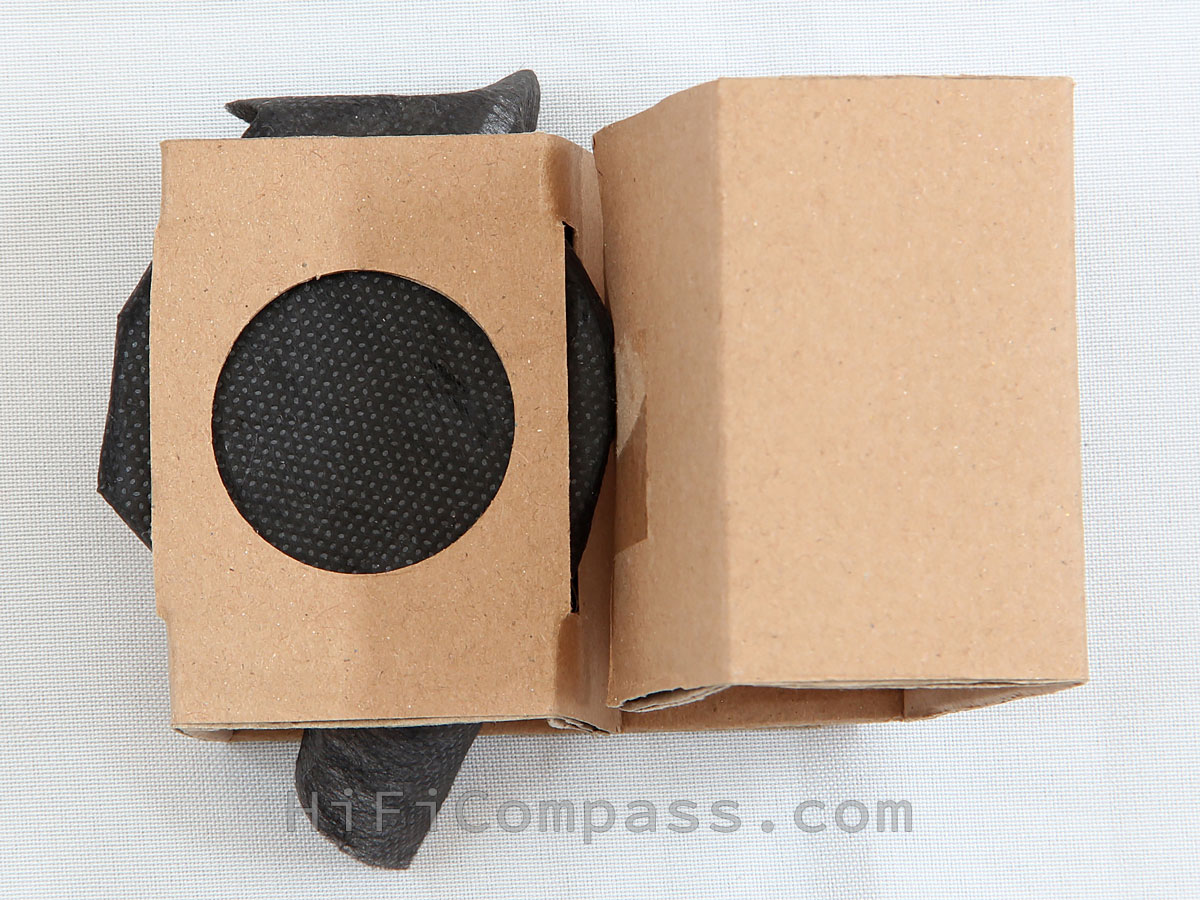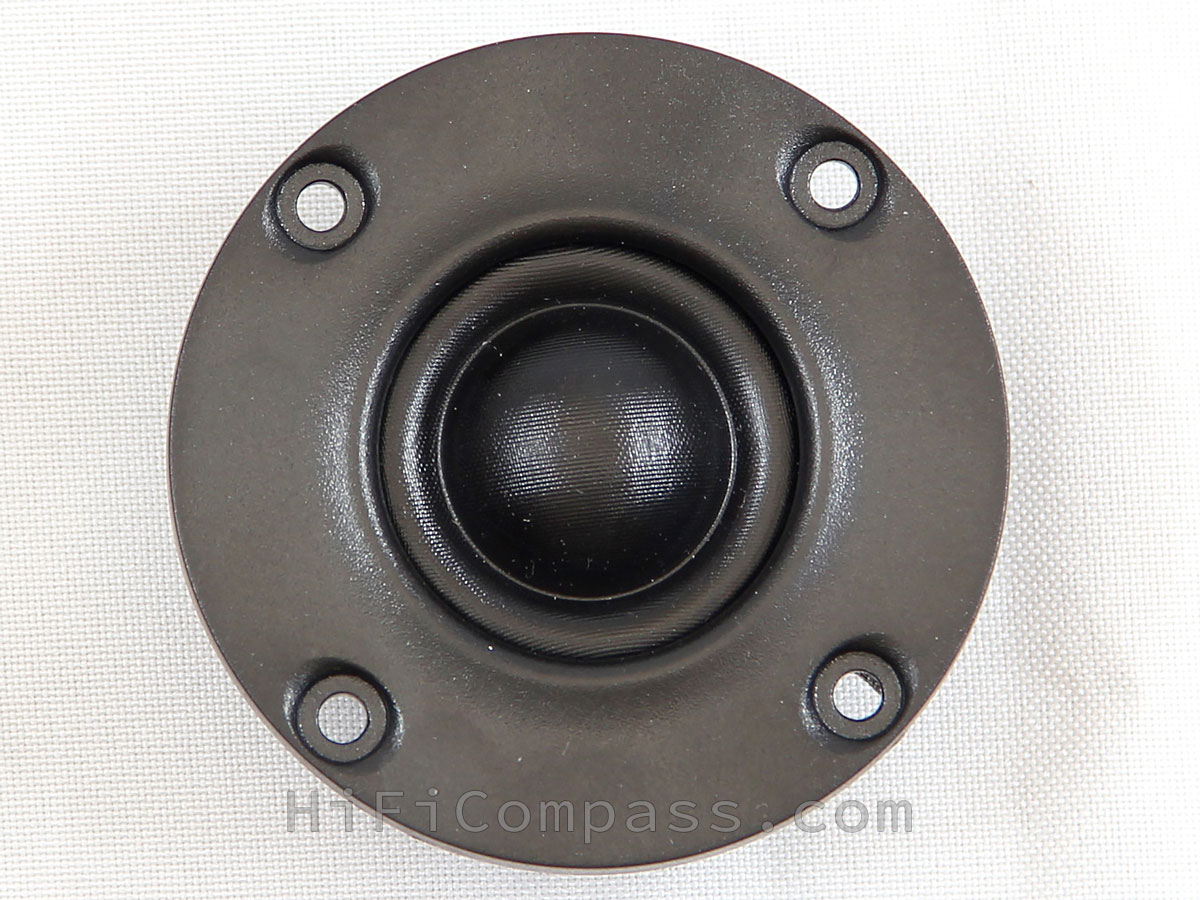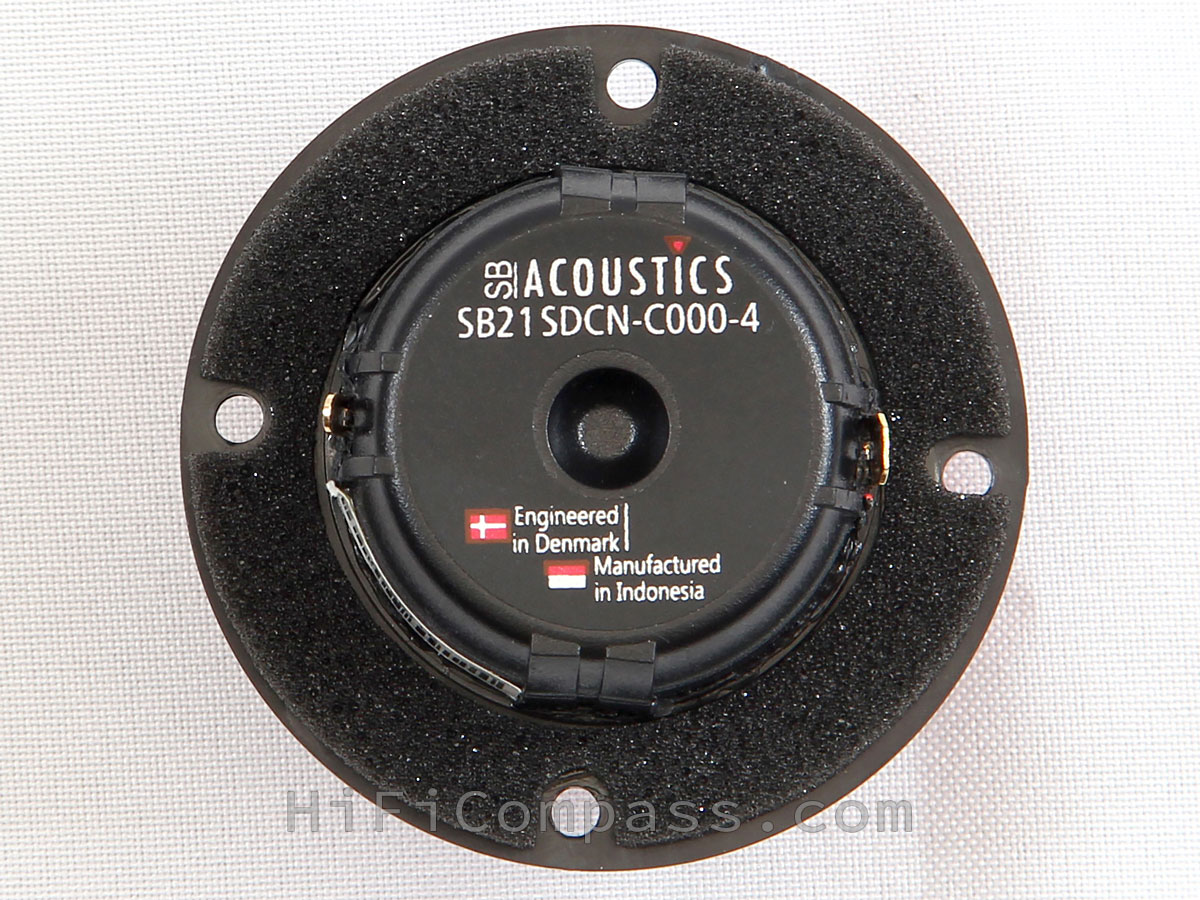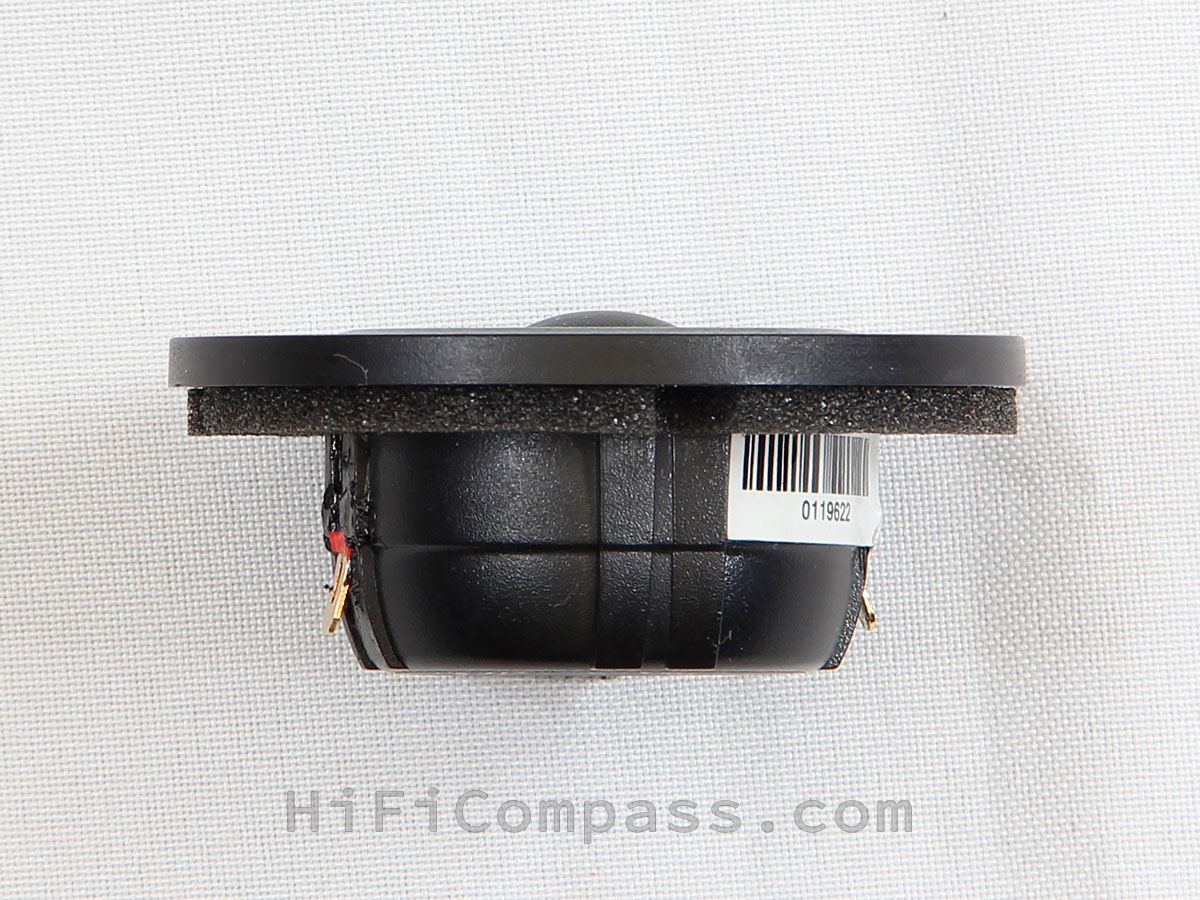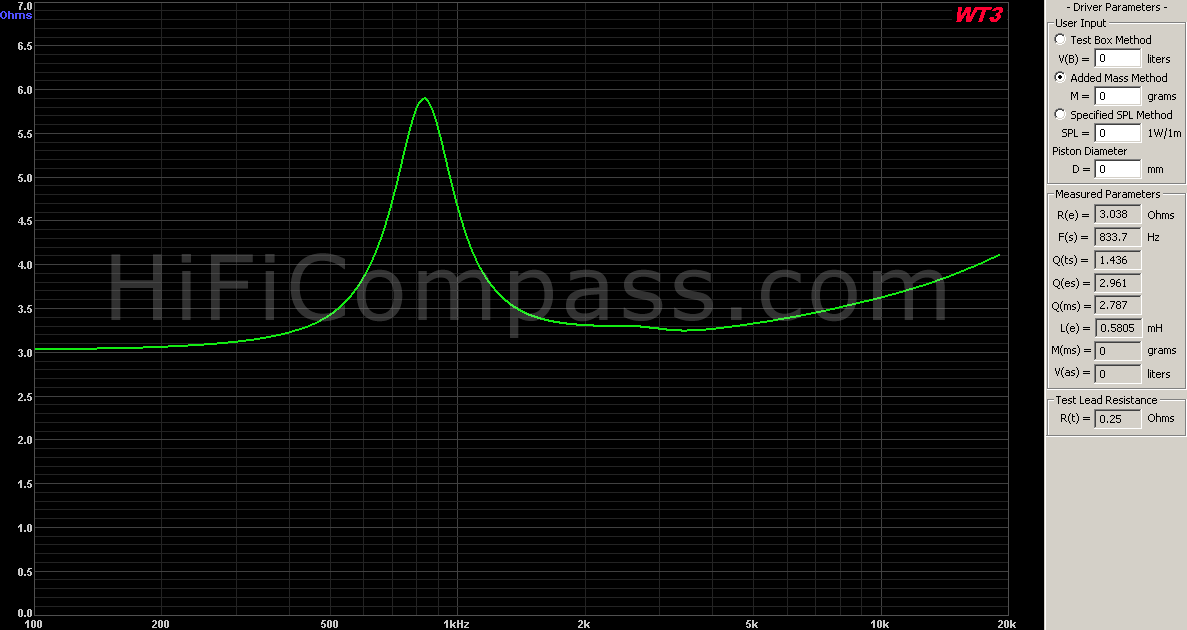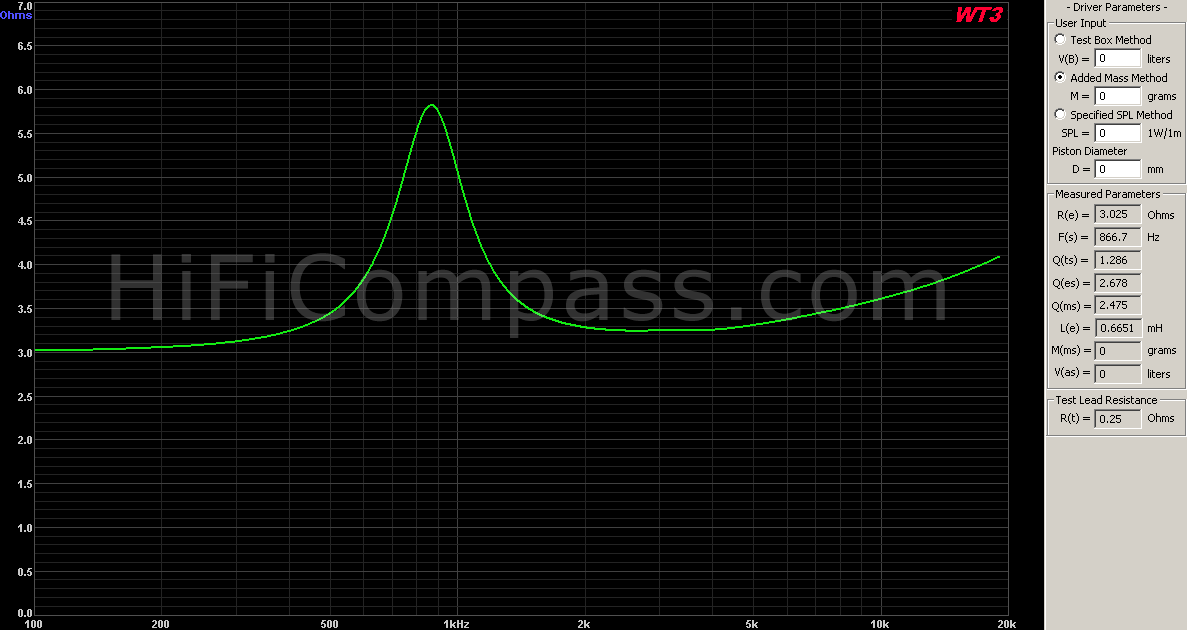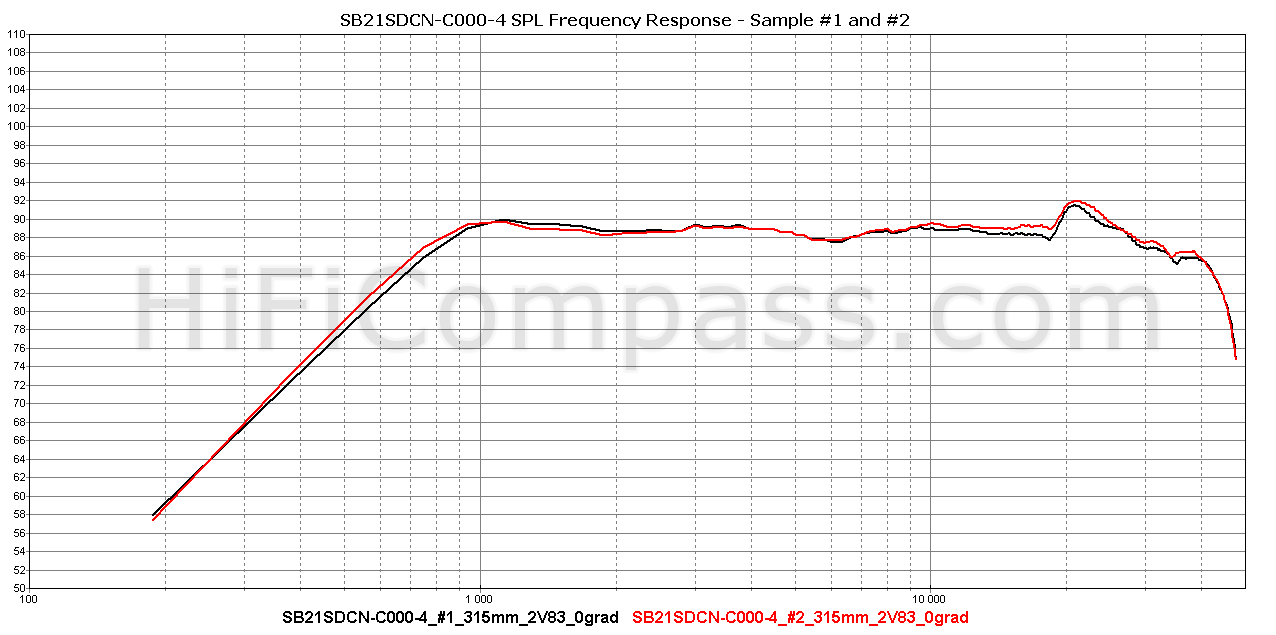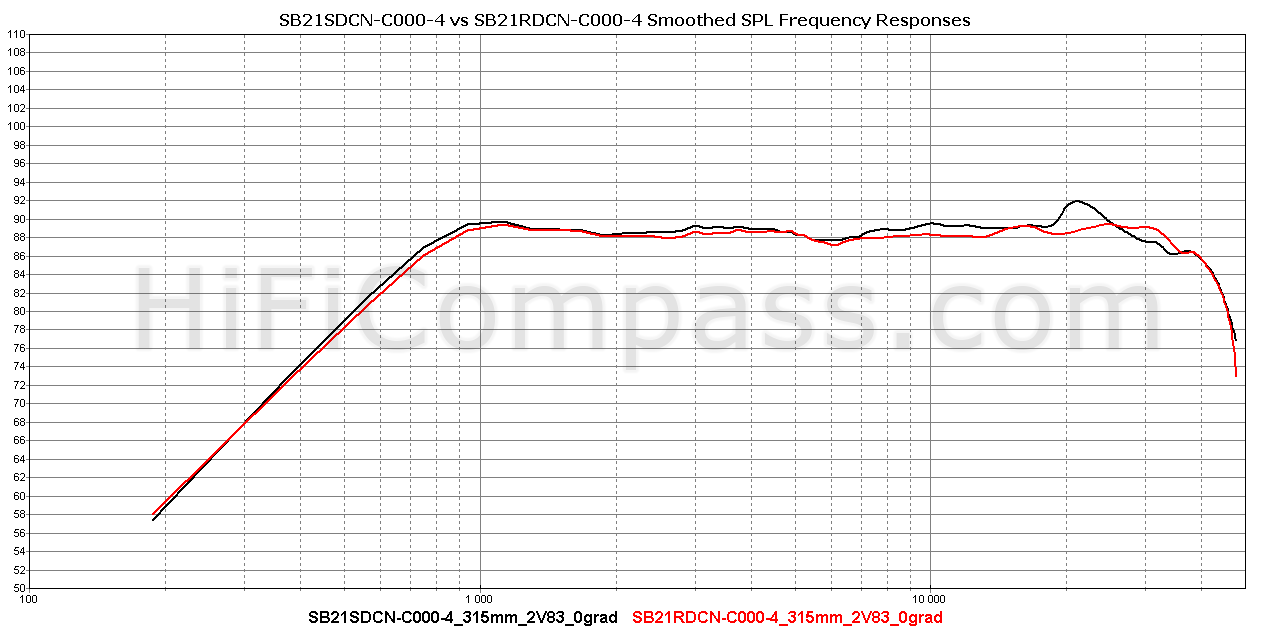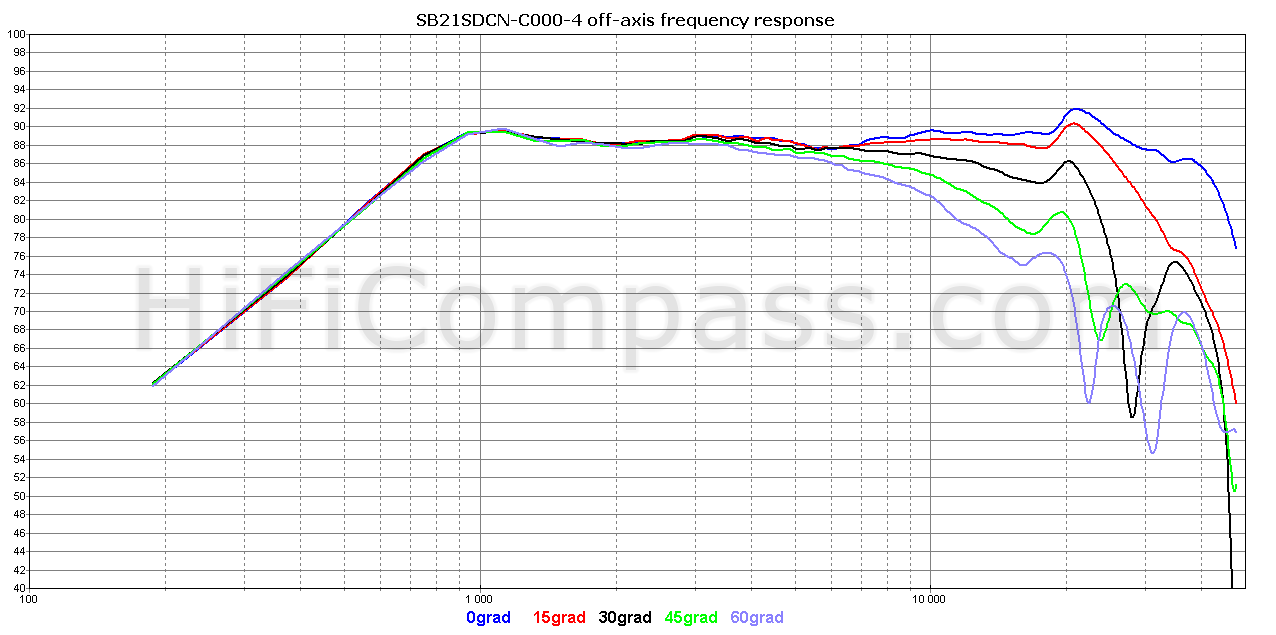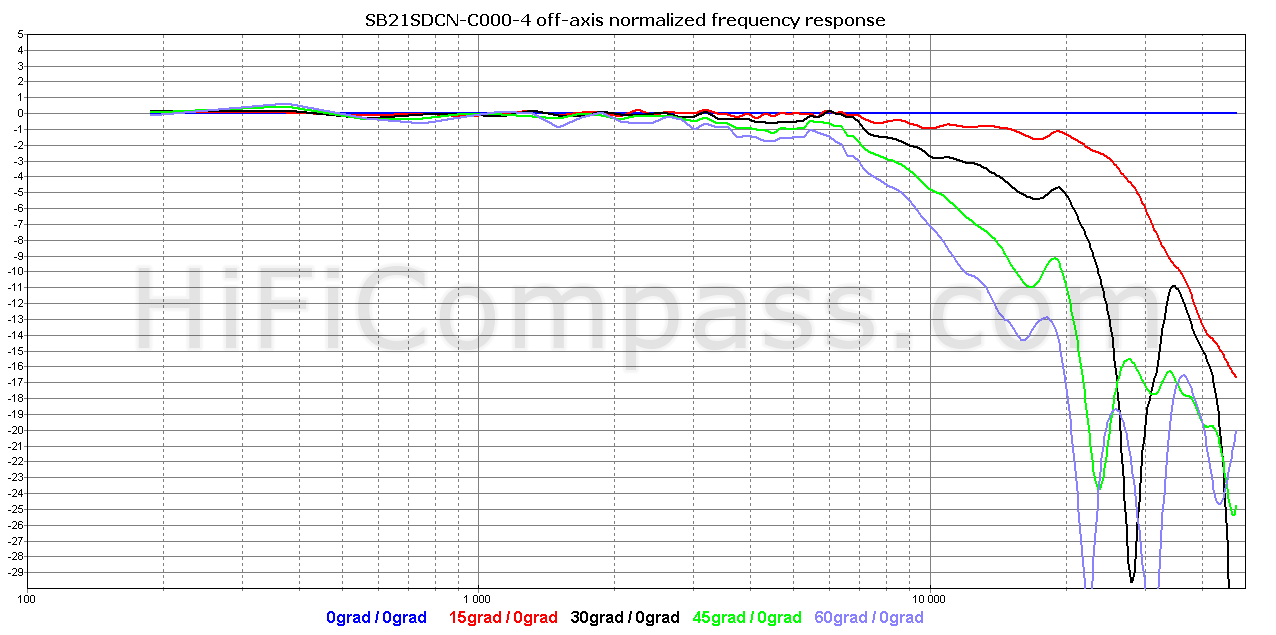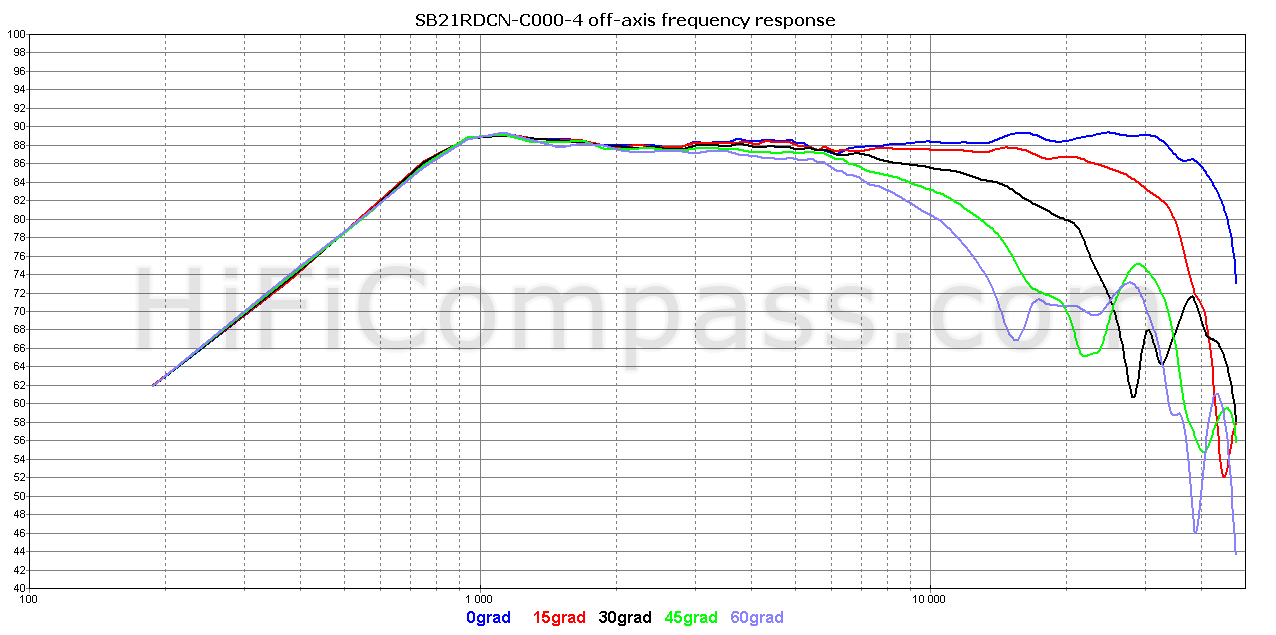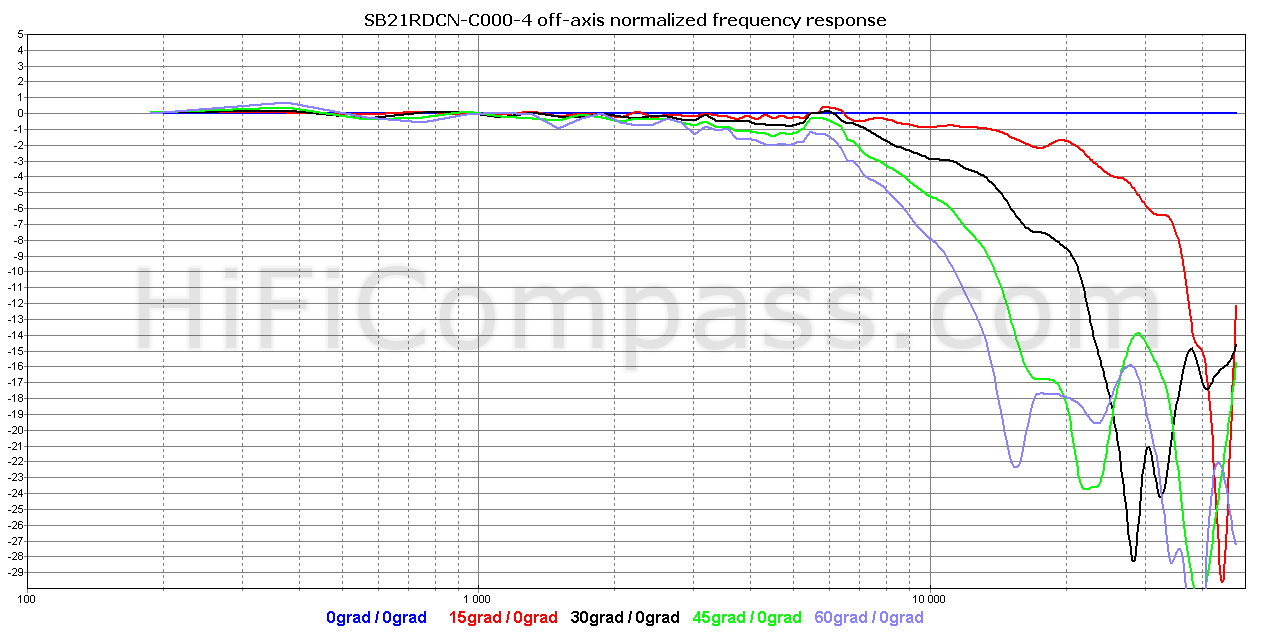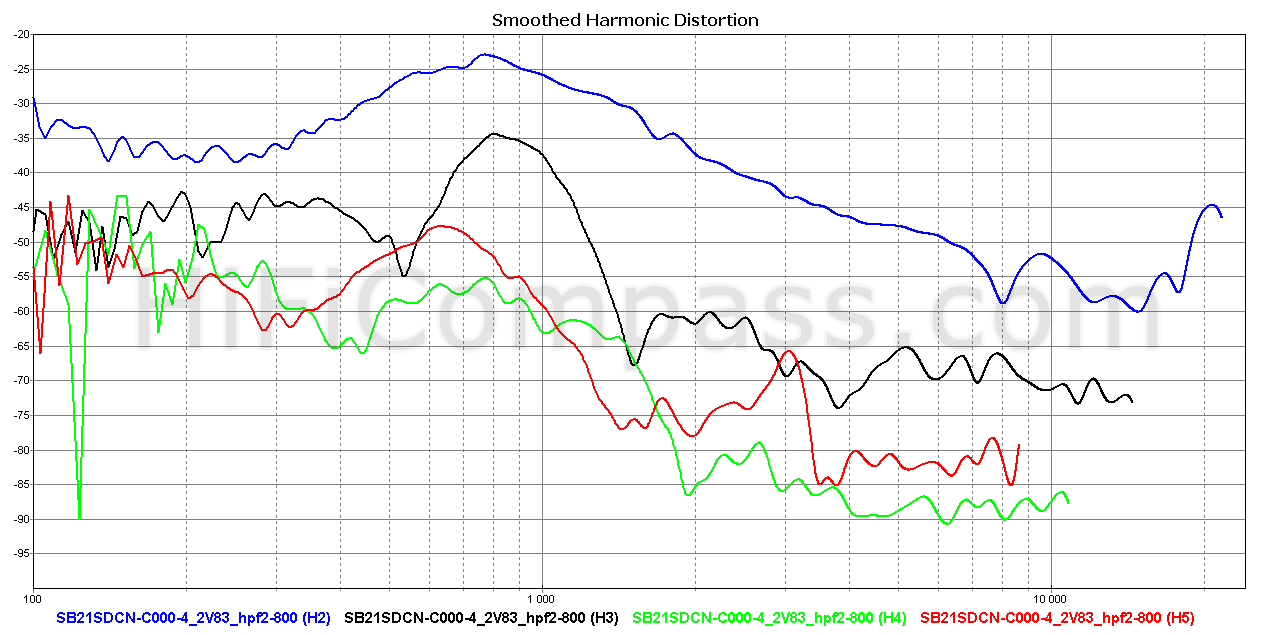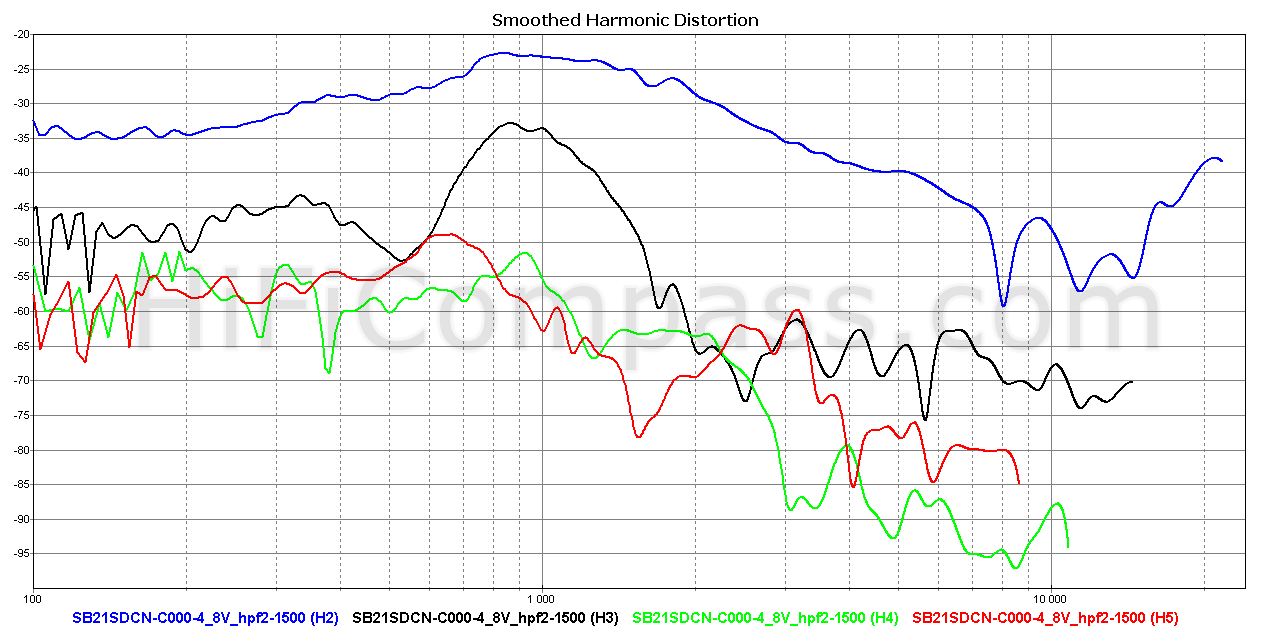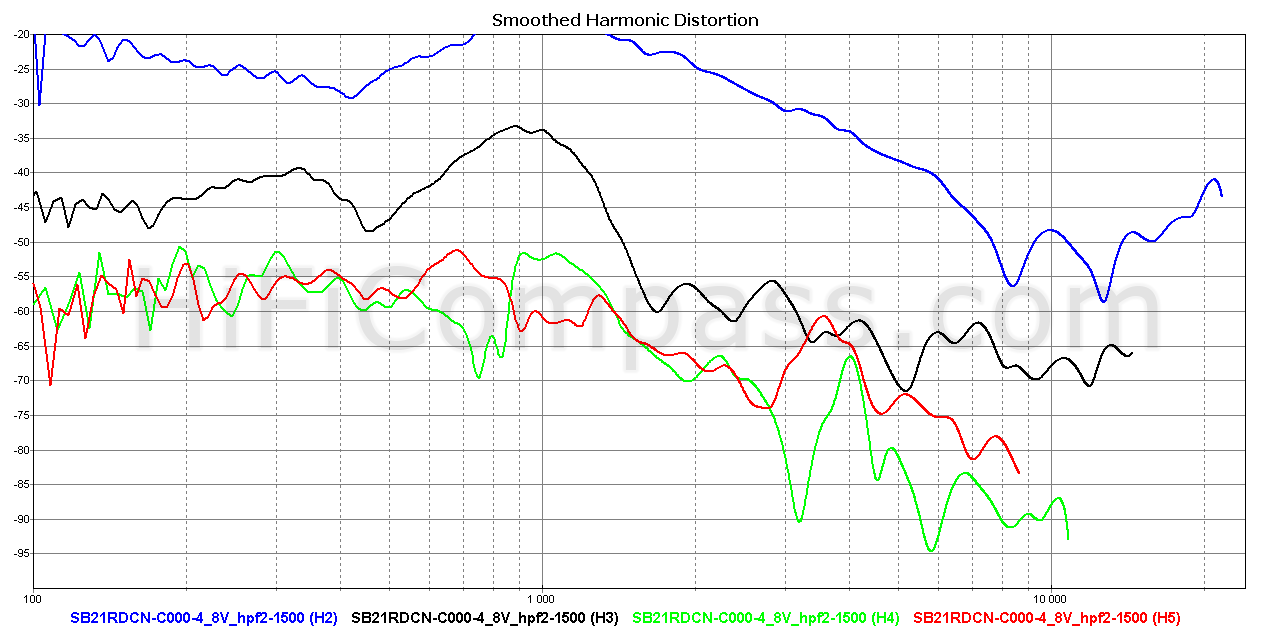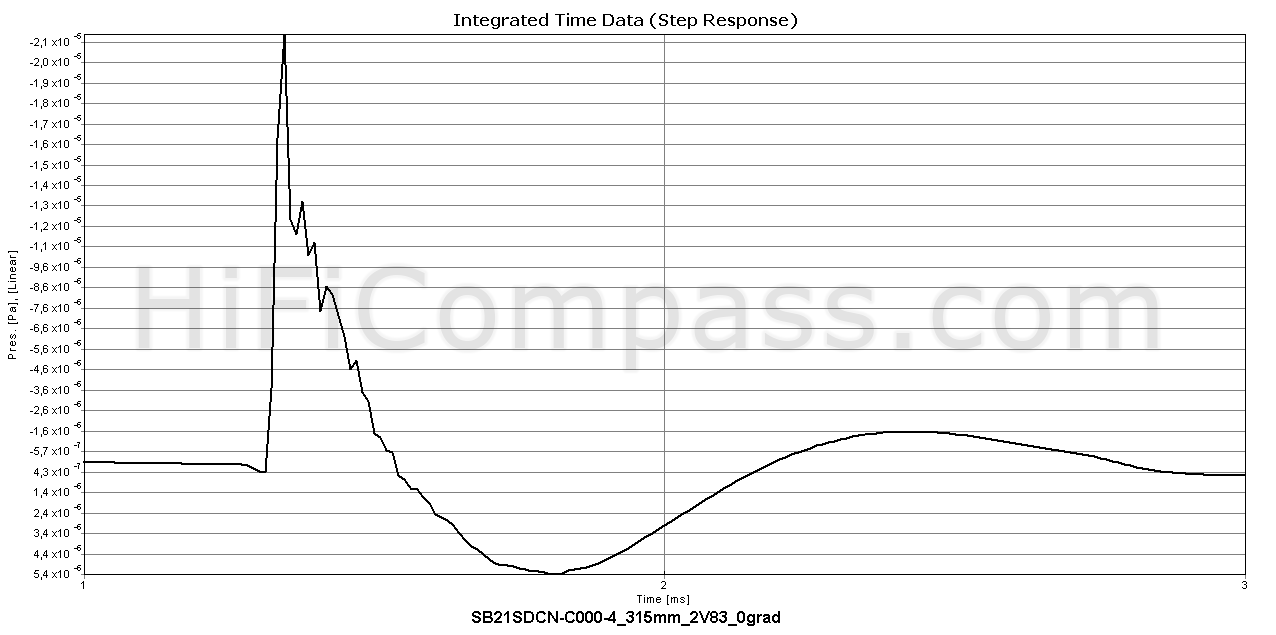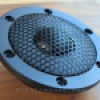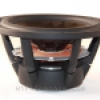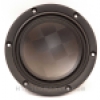HiFiCompass
SB Acoustics SB21SDCN-C000-4, SB21RDCN-C000-4
What is on the test bench?
Young graduates of the Indonesian giant Sinar Baja Electric came to take the exam today. Two miniature tweeters with 21mm fabric diaphragms and neodymium magnet motors SB21SDCN-C000-4 and SB21RDCN-C000-4 extend the range of SB Acoustics 21mm tweeters. Until now this segment of tweeters of the brand was represented by only two models on ferrite magnet motors - SB21SDC-C000-4 and SB21RDC-C000-4 with a mounting flange diameter of 92 mm. This size allows the tweeters to be used in home systems, while the models tested today have a flange diameter of only 58 mm, which already opens the doors of the car audio system for them.
By its construction SB21SDCN-C000-4 and SB21RDCN-C000-4 are identical in absolutely everything, except for the sound radiating element. The first has a classic dome, and the second one has a ring radiator. Ring radiators have become widely known since 1999, after VIFA company released its XT25TG30-04 tweeter, which has gained a lot of popularity among both loudspeaker manufacturers and the DIY comunity. A few years later, ScanSpeak company, have already been acquired by VIFA and being already under the same roof with it, released a "high-end" version of XT25 - legendary R2904/7000 tweeter, which for several years became the company's flagship and took place in high-end loudspeakers of many well-known brands. Why am I saying this? Because the fact that the inventor of the very first ring-radiator XT25TG30-04 was Lars Goller, thanks to whom VIFA filed an application in 2000, and the next year received a patent for a "ring-radiator" tweeter. The essence of the patent was a phase plug in the center of the annular membrane. In 2006 Lars Goller became a member of the ScAR (Scandinavian Audio Research) group, which began to cooperate with Sinar Baja Electric. The result of that cooperation was in the emergence of the widest range of high-quality speakers under the SB Acoustics (budget segment) and Satori (high-end segment) brands. So, one of the first products were tweeters, ring radiators, SB Acoustics SB29RDC-C000-4 and Satori TW29R, which had great success. In order not to violate patent restrictions, Lars Goller applied a new way to neutralize the weak points of the ring membranes in these tweeters without using a phase plug. He changed the way of fixing the central part of the membrane, as well as the geometry of the membrane, making it flatter. Subsequently, he applied for a patent for a new membrane design.
It will be very interesting to compare advantages and disadvantages of the both technologies in this review.
Here you can learn about the history of the SB Acoustics and Satori brands, as well as one of the world's largest speaker drivers manufacturer - Sinar Baja Electric (www.sinarbajaelectric.com).
Why do we test this?
Sinar Baja Electric has kindly provided seven of its latest models for independent testing:
Tweeter SB Acoustics SB21SDCN-C000-4
Tweeter SB Acoustics SB21RDCN-C000-4
Tweeter Satori TW29TXN-B
Tweeter Satori TW29BNWG-4
Midrange Satori MD60N-6
Midwoofer Satori MW16TX-4
Midwoofer Satori MW19TX-4
Since all the models are just beginning to enter the market, it is impossible to find any additional information, except for meager numbers from the datasheets. Today's review opens a series of tests, the purpose of which will try to make up for the lack of information and to acquaint everyone with detailed technical characteristics and application features of the new speaker models
I would like to express my deep gratitude to Sinar Baja Electric company for the provided new products, as well as personally Mark Thomsen (International Sales & Marketing Manager SB Audience | SB Acoustics) and Melly Wulandari (SB Acoustics Project Manager) for their assistance in implementing the series of reviews.
What did the manufacturer state?
The datasheets are quite detailed and contain all the parameters a loudspeaker designer needs.
Since the review is comparative, first I will list the features common to all the models:
- Copper cap for reduced voice coil inductance and minimum phase shift
- Compact low distortion neodymium motor system
- Non-resonant rear chamber with optimized damping for improved dynamics
- CCAW voice coil for low moving mass
- Long life silver lead wires
- Low resonance frequency
Now, the individual features are:
for SB21SDCN-C000-4:
- Large surround dome for increased acoustic output
for SB21RDCN-C000-4:
-
Non-resonant diaphragm design for minimum high frequency break-up
In terms of parameters, the models differ only in the effective radiating area of the membrane - 4.9 cm2 for the dome tweeter versus 4.6 cm2 for the ring radiator, and the sensitivity, which is 0.5 dB higher for the dome tweeter.
Visual inspection
SB21SDCN-C000-4
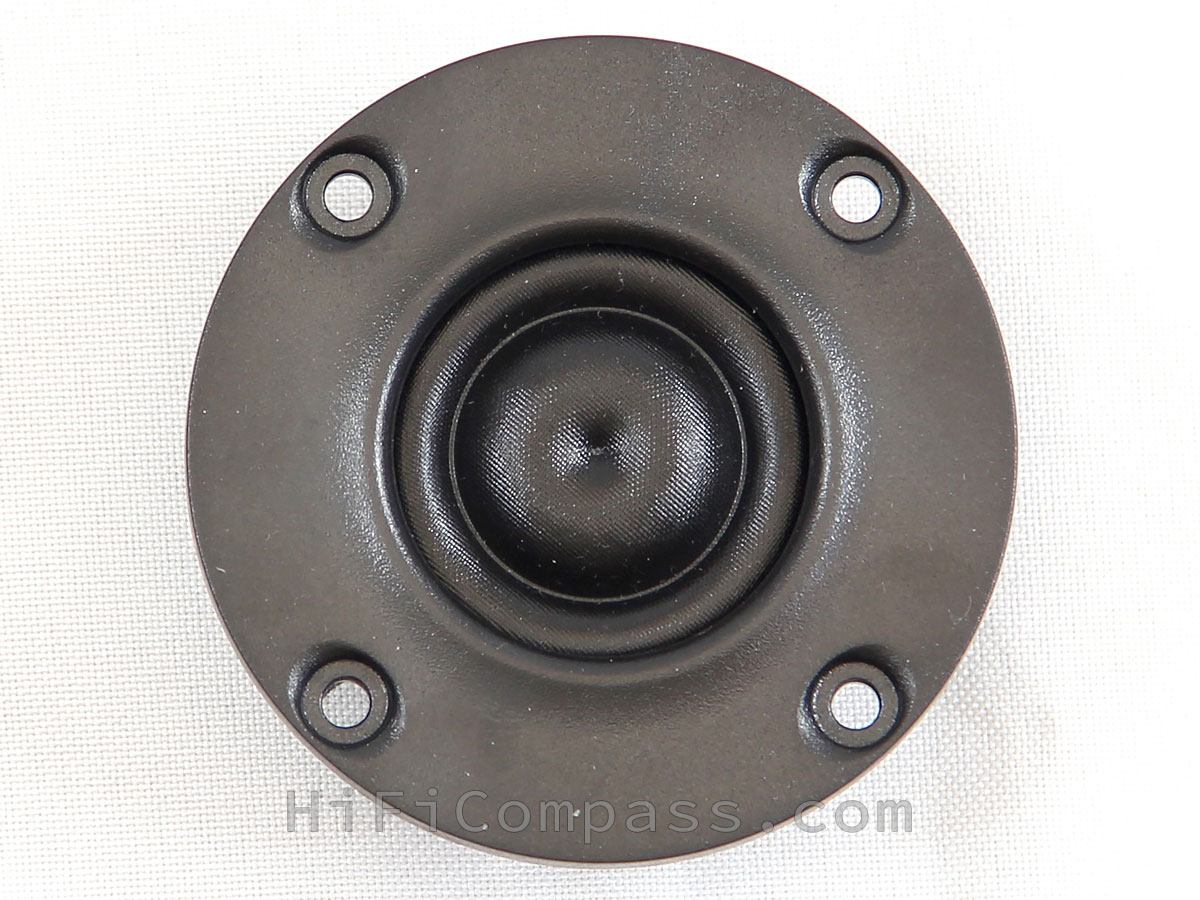 |
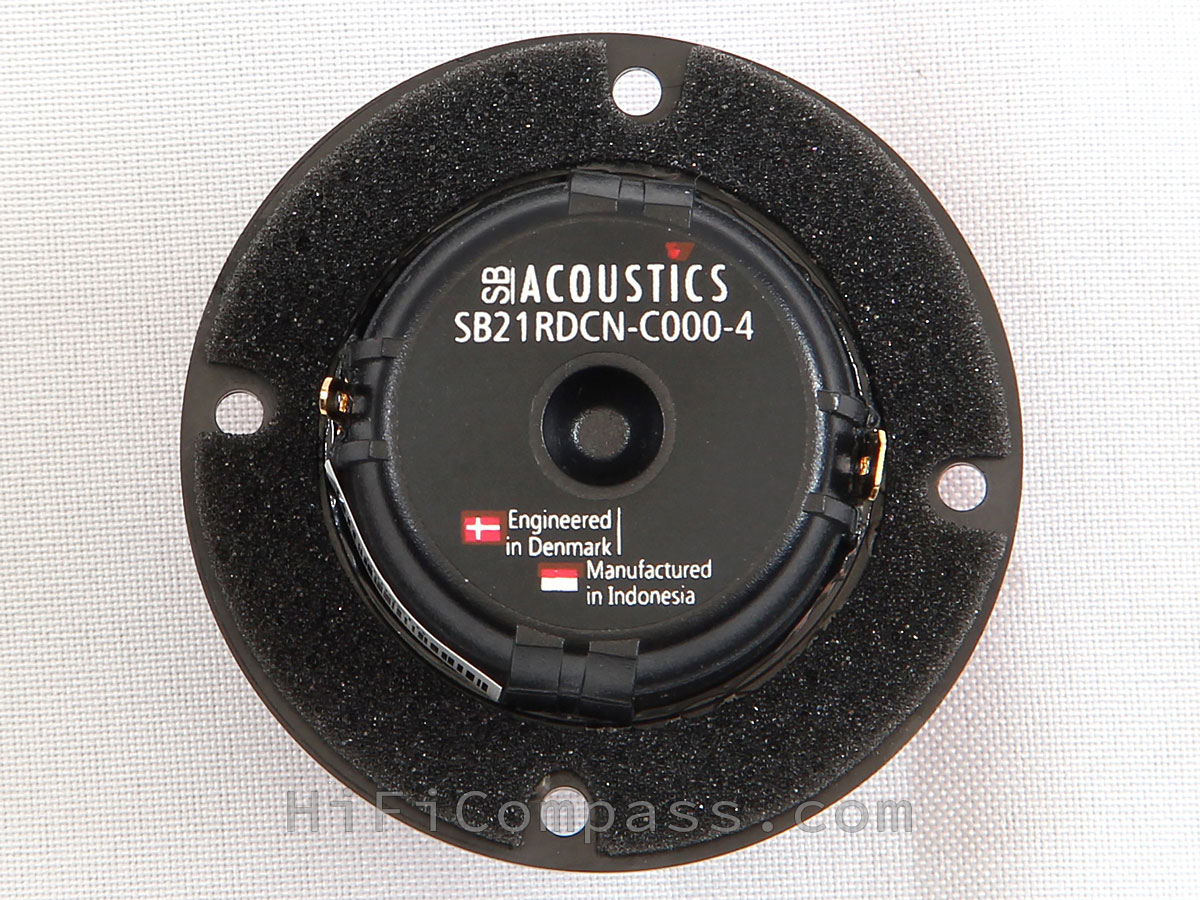 |
 |
The tweeters are delivered in a durable glossy corrugated cardboard box. Inside it there is an additional frame made of double-folded corrugated cardboard, in the grooves of which the speaker flange is rigidly fixed. To protect against dust, accidental scratches and scuffs, the front of the tweeter is wrapped in a soft, translucent cloth. Everything is simple and very reliable. The packaging is commendable.
The tweeter body, flange and rear chamber are made of plastic. The plastic is very durable, as trying to bend the flange even slightly with my fingers did not bring any success. With such rigidity, four mounting holes are quite enough. The rear camera barely responds to finger tapping. The flange has a small annular bead around the center hole. Most likely, this is how SB Acoustics engineers optimized the axial and off-axis frequency characteristics. A soft foam rubber seal is attached to the back surface of the flange.
The workmanship is excellent, there is nothing to complain about. Perfectly fitted parts, complete absence of any cosmetic defects, no burrs, chips and traces of glue. The terminals sit very firmly in the body and do not stagger at all.
The tweeters differ one from the other only in the shape of the membrane. The SB21SDCN has a fairly high profile, which gives it additional rigidity. The central part of the SB21RDCN annular membrane is absolutely stationary. One gets the impression that it was obtained from the SB21SDCN membrane simply by "pinning" the top of the dome to the magnetic system. In fact, this is not the case, the SB21RDCN ring membrane cannot be transformed from the SB21SDCN dome.
Visually and by touch the membrane material is exactly the same as in all other SB Acoustics and Satori fabric tweeters. It looks like this is the same fabric with damping impregnation. It seems not sticky, but from personal experience I would say this fabric attracts dust quite well, although not in the way that Morel (Israel) and Dynaudio (Denmark) tweeters do.
Impedance frequency response
The impedance curve of the SB21RDCN is just perfect. The SB21SDCN one exhibits a slight "swelling" in the 2.5 kHz region - an echo of the interaction of the moving system with the back chamber. Nothing critical, in my opinion. Throughout the rest frequency range everything is good. The both curves are absolutely smooth, without a slightest sign of any internal resonances. This is achieved thanks to the right damping of the interior cavity and the moving system. The increase in impedance with increasing frequency is very small - the result of using a copper cap on the pole piece of the magnetic system.
On-axis frequency response
SB21SDCN-C000-4:
The measured sensitivity in the range from 2 to 20 kHz averaged 89 dB, which is 1 dB lower the manufacturer's declared value. The frequency response has a flat character with no tilt and extends from 800 Hz right up to 40 kHz. The total unevenness does not exceed 2 dB in the range 900 Hz - 18 kHz, which is very good for a fabric dome tweeter. At 21 kHz there is a low-Q resonance of the membrane with a height of about 3.5 dB. The parameters and location of the resonance are such that they can be considered practically not influencing on sound reproduction. Around 6 kHz there is a small shallow dip of about 1 dB. The responses of two samples differ no more than 0.5 dB up to 2 kHz. It is no matter because that is a non-target frequency range when using the tweeter in a real loudspeaker. In the range from 10 to 20 kHz the divirgence is 0.5 to 1 dB. Again, it is not so critical due to the lower ear sensitivity in that range. In the most important range from 2 to 10 kHz the frequency responses coincide perfectly. The measured tweeter's frequency response matches the datasheet very good.
SB21RDCN-C000-4:
The measured sensitivity in the range from 2 to 20 kHz averaged 88.5 dB, which is 1 dB lower the manufacturer's declared value. The frequency response has a flat character with no tilt and extends from 730 Hz right up to 40 kHz. The total unevenness in the 850 Hz - 33 kHz range does not exceed 2 dB (!!!) - very impressive figure for a fabric membrane tweeter. Around 6 kHz there is a small shallow dip of about 1 dB. The performance of the two samples in the ENTIRE frequency band does not differ at all. Yes, you heard right - at all. I even thought at first that I added the frequency response of the same tweeter twice during the preparation of the material for the publish. I checked myself - no, everything is correct. It's a fantastic, there are no other words. The measured tweeter's frequency response matches the datasheet very good.
A comparative analysis of the frequency responses of the dome and ring tweeters is already beginning to show the features of the two technologies. The annular membrane a priori does not have the piston mode of operation, so it does not have a transition from the piston to the modal mode and is less prone to resonances. This allowed to obtain a smoother frequency response, but not for free. The ring radiator had to pay off 1 dB of sensitivity.
Off-axis frequency responses
Harmonic distortion (315 mm)
Voice coil current harmonic distortion
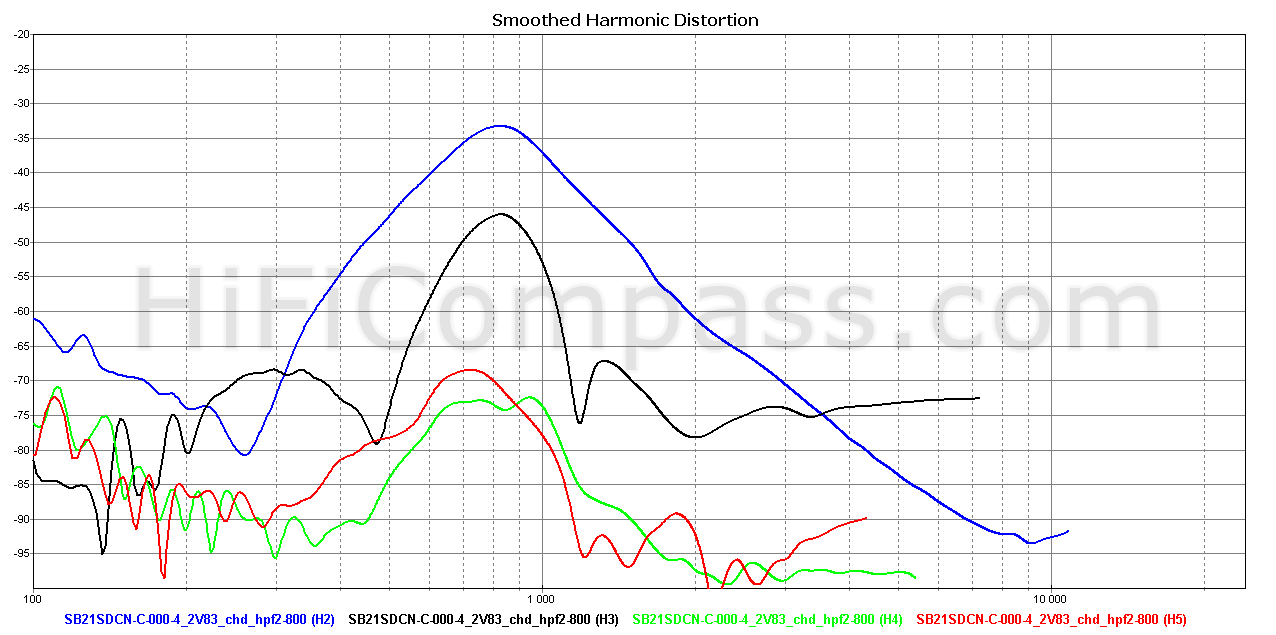 |
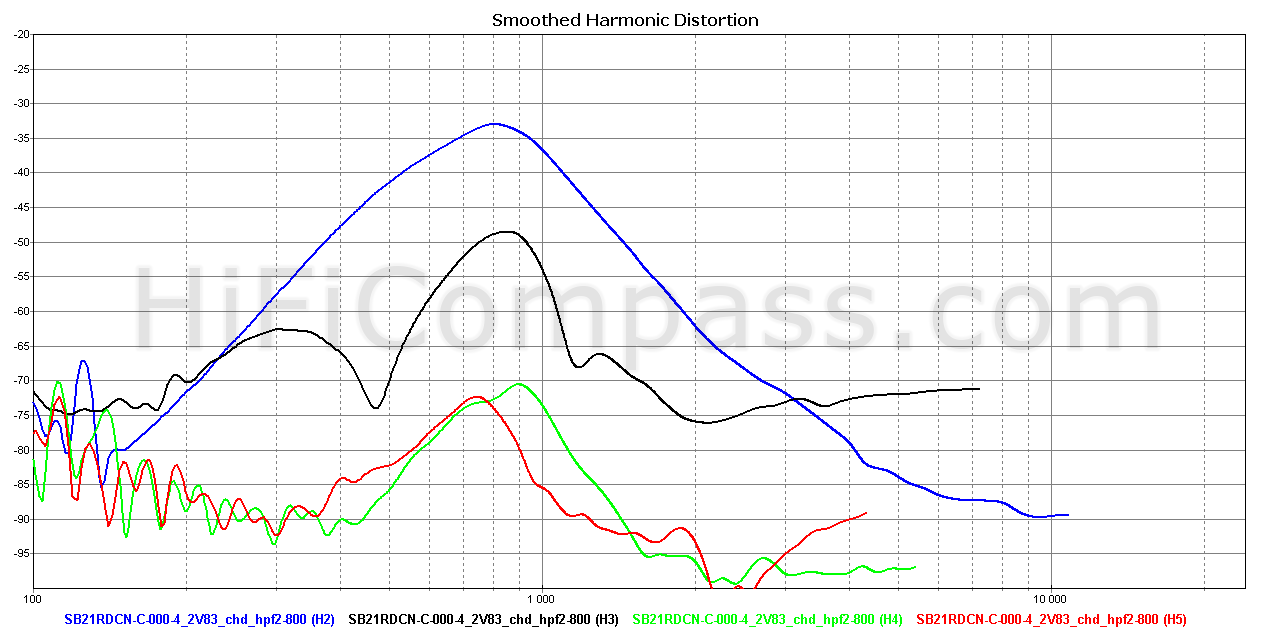 |
This type of measurement, despite its simplicity, is an excellent tool for assessing the linearity of a speaker motor. The above plots show the frequency dependences of the 2nd, 3rd, 4th and 5th harmonics of the voice coil current at 2.83 Volt.
Voice coil current nonlinearity is the direct nonlinearity of the mechanical force driving the speaker cone, since this force is related to the current by a simple relationship F=B*L*I, where B is the magnetic field strength, L is the length of the voice coil wire inside the magnetic gap and I is the current. So, in principle, it is practically impossible to obtain sound pressure distortion lower than current distortion in the frequency range where the contribution of the motional nonlinearity becomes insignificant.
The distortion behavior is the same for both tweeters. This is no coincidence, because they have the same motor.
Step response
Waterfall
Listening impressions
Due to the low resonance frequency and very flat frequency response both tweeters sound full with good reproduction of the space and the room atmosphere. The tonal balance is absolutely neutral. The dominance of the second harmonic gives the sound some thickness and relief. Unlike their larger counterparts, small fabric tweeters convey the sound of percussion more detailed and sharper, and this is their undoubted advantage. The SB21SDCN-C000-4 sound seemed more airy and emotional to me, while the SB21RDCN-C000-4 sounds more neutral and restrained. The differences are most likely caused by the different sound dispersion.
"How to use" recomendations
Thanks to the low distortion, low resonance frequency and extended low frequency response, both tweeters can be used down to 3 kHz in high-quality two and more way loudspeakers of moderate size. The compact size of tweeters removes all barriers before using them in car audio. The small diameter of the voice coil, low sensitivity, low maximum power and the plastic housing, which makes heat dissipation difficult, impose restrictions on the maximum sound pressure and this must be taken into account when designing loudspeakers.
What is the price and where to purchase it?
The tweeters are already ready to order and can be purchased, for example, in the following online stores:
SB21SDCN-C000-4, the retail price is in the range of €23-27/piece excluding VAT
- https://solen.ca/products/speakers/home-speakers/tweeters/sb-acoustics-s...
- https://en.toutlehautparleur.com/dome-tweeter-sb-acoustics-sb21sdcn-c000...
- https://www.audiohobby.eu/ru/sb-acoustic-tweeters/15129-sb-acoustics-sb2...
SB21RDCN-C000-4, the retail price is in the range of €28-36/piece excluding VAT
- https://solen.ca/products/speakers/home-speakers/tweeters/sb-acoustics-s...
- https://en.toutlehautparleur.com/dome-tweeter-sb-acoustics-sb21rdcn-c000...
- https://www.audiohobby.eu/ru/sb-acoustic-tweeters/15128-sb-acoustics-sb2...
Summary
Overall, these compact budget tweeters made a good impression on me by their measurements and sound. Many years of personal experience with SB Acoustics speakers confirm that all datasheet data can be trusted with confidence. This testing once again confirmed that the measured axial frequency characteristics, impedance characteristics and resonance frequencies are in good agreement with the stated ones. The measured sensitivity values turned out to be 1 dB lower than the nominal ones. I was a little surprised by the discrepancy between the measured and declared off-axis frequency characteristics.
Comparison of tweeters SB21SDCN-C000-4 and SB21RDCN-C000-4 made it possible to identify the advantages and disadvantages of two types of sound radiators - fabric dome and ring. The advantages of dome radiators are a slightly hihger sensitivity, wider sound dispersion, a couple dB lower the 2nd harmonic distortion. The advantage of ring radiators is that their membranes are less prone to resonances, resulting in a smoother and more extended frequency response.
I would highlight the following features of the tweeters:
- moderate sensitivity - from 88.5 to 89 dB/2.83 Volt at 1m
- very extended and even frequency response, especially for a ring radiator
- low harmonic distortion
- excellent workmanship
- can be used down to 3 kHz
- wide sound dispersion
- compact size
You can get more information about the measurement results here - SB21SDCN-C000-4, SB21RDCN-C000-4.
Yevgeniy Kozhushko/09.12.2020
CONTACTS
- Ukraine
- (+380) 95 904 7827
- hificompass@gmail.com
LAST NEWS
-
27 Mar 2025
-
04 Mar 2025
-
25 Feb 2025
-
10 Feb 2025

